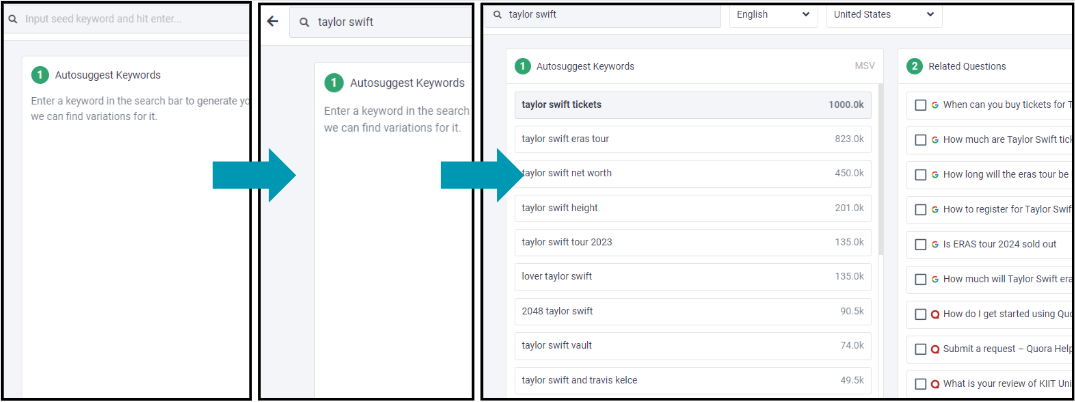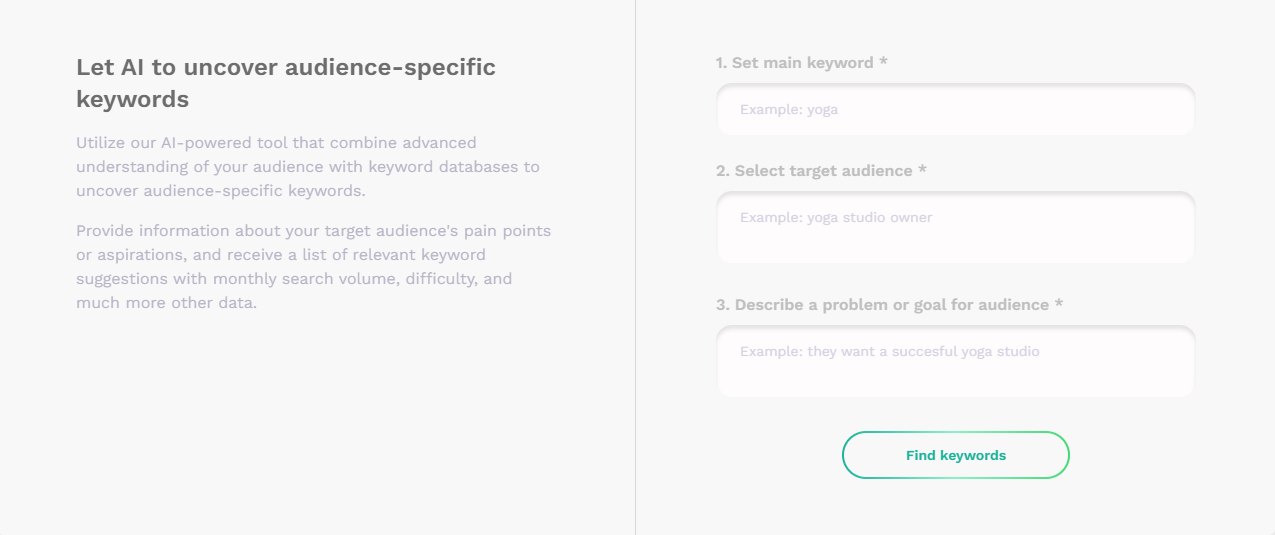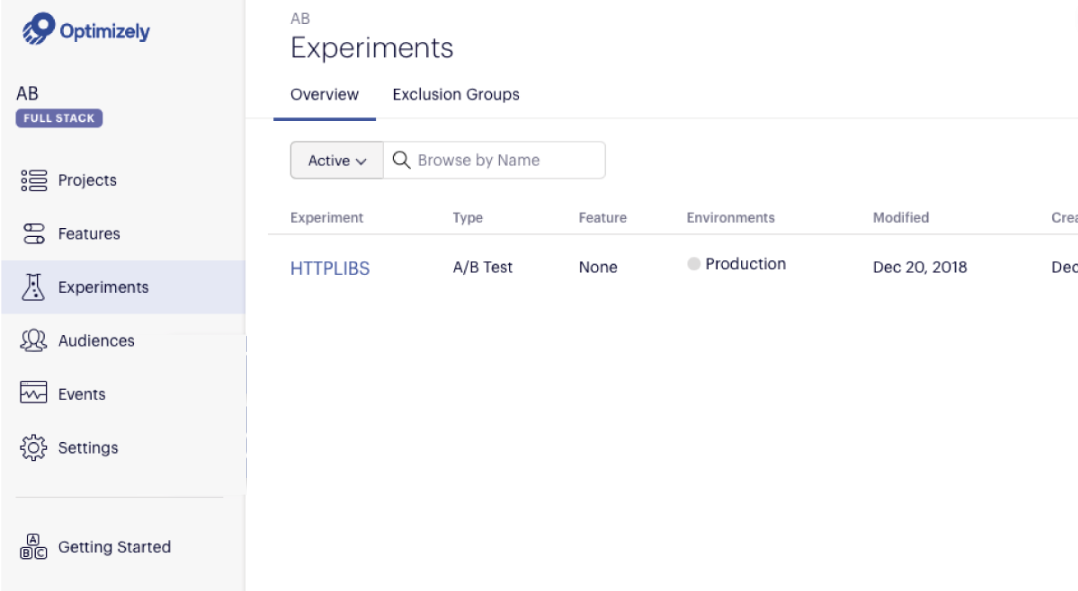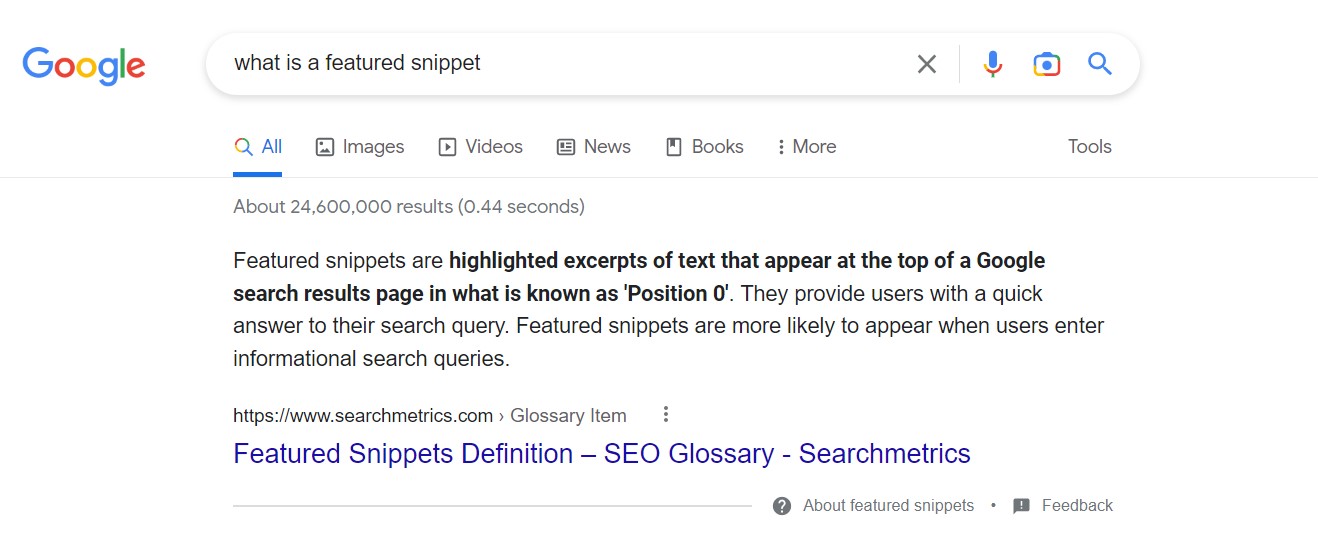How Generative AI is Reshaping SEO

The adoption of AI in marketing is surging. The Artificial Intelligence 2024 Benchmark Report from Influencer Marketing Hub shows that 42.2% of marketers have already adopted generative AI, highlighting its increasing role in digital strategies.
As search engines and user behaviors evolve, businesses and marketers are adapting to a new search engine optimization (SEO) landscape shaped by the transformative power of generative AI.
From content creation to personalized search experiences and a deeper understanding of user intent, generative AI is altering how we approach SEO strategies. Learn how this technology is reshaping SEO and what it means for businesses looking to maintain a competitive edge.
The Rise of Generative AI in SEO
Generative AI refers to advanced artificial intelligence models that can create new content, such as text, images, and even code, based on prompts and learned data. Tools like OpenAI’s ChatGPT, Google’s Bard, and Frase have opened new doors for SEO professionals by automating and optimizing processes that were previously labor-intensive.
The rise of generative AI in SEO has transitioned the conversation from if it will transform the industry to how it will reshape the way we approach optimization.
1. Generative AI and Content Creation
Content creation has always been a foundational element of SEO, though traditional methods often involved time consuming processes like keyword research, content development, and manual optimization. Generative AI tools, such as ChatGPT and Frase, have streamlined these processes by enabling marketers to:
Automate Content Generation
According to an eMarketer report, 74% of marketers are using AI tools to enhance their content creation process, with many reporting improved efficiency and consistency in meeting SEO goals.
Scale Content Production
AI-powered tools help businesses keep up with the growing demand for fresh content. Studies from DemandSage show that businesses who publish 16 or more blog posts a month are likely to generate 4.5 times as many leads compared to businesses that don’t publish as often, and AI makes this scalability achievable.
2. The Rise of Personalized Search Experiences
Personalized search experiences are tailored interactions that adapt search results based on individual preferences, behavior, and intent. These experiences leverage data like search history, location, device type, and user demographics to offer results that are most relevant to the searcher. McKinsey and Company insights reveal that 71% of consumers expect personalized experiences online, and search engines are responding by tailoring search results using generative AI algorithms.
With the increasing sophistication of personalized search experiences driven by AI, user behavior tracking, and demographic data, companies must adapt their strategies to remain competitive. Here are key approaches to optimize for this trend:
Create Highly Relevant Content
Creating highly relevant content is a cornerstone of optimization. Companies should develop resources that cater specifically to their audience’s needs, interests, or demographics. Incorporating dynamic content strategies, such as localized information or suggestions based on user interests, ensures the content resonates with individual users.
Address Mobile and Voice Search
Mobile and voice search have become essential components of personalized search experiences, and optimizing for these formats is vital. According to DemandSage, approximately 27% of people use voice search on their mobile devices. With that in mind, companies should ensure their websites are mobile-friendly, with fast loading times and intuitive navigation. Additionally, voice search optimization involves using conversational keywords and addressing common queries, such as “best marketing agency for SEO”.
Segment SEO Strategies
SEO strategies must also adapt to personalized search by focusing on segmentation. This means targeting a mix of long-tail keywords and user intent-based phrases. For example, a university could create landing pages tailored to different audience segments, such as “Best Transfer Student Resources” or “Tips for Freshman Applicants,” aligning content with specific characteristics of target users.
Test and Iterate
Finally, companies should regularly analyze their personalized search performance and refine their strategies through testing. Metrics such as rankings, sessions, and conversion rates provide insights into what resonates with users. Conducting tests on personalized features, such as tailored content or meta tag updates, allows companies to continuously refine and improve their approach.
3. Understanding User Intent
Understanding user intent is a fundamental aspect of successful SEO strategy. It involves determining what users are looking for when they type a query into a search engine and ensuring that your content aligns with their expectations. By focusing on user intent, you can create content that satisfies searchers’ needs, ultimately improving your rankings and driving more targeted traffic to your site. Here’s how you can optimize for user intent in SEO:
Improved Keyword Context Analysis
Data from Ahrefs shows that 68% of all online experiences begin with a search engine, further emphasizing the importance of intent-driven keyword strategies. Generative AI allows businesses to refine their understanding of complex search queries, making content more relevant and user focused.
Enhanced Keyword Strategy
Generative AI tools like ChatGPT and Frase can identify and group keywords based on intent, helping marketers craft targeted strategies. Instead of focusing solely on high-volume keywords, businesses can prioritize terms that align with the nuances of user queries.

Enhanced Semantic Search
Enhanced semantic search is an advanced search technology that improves the accuracy and relevance of search results by understanding the meaning behind search queries rather than just the matching keywords. It uses natural language processing (NLP), machine learning, and contextual analysis to interpret user intent, consider synonyms, and understand the relationship between words.
Example: With a query such as “best Health Sciences programs near me”, enhanced semantic search understands that the user is looking for nearby colleges, even without “college” being explicitly mentioned in the search.
Challenges of AI-Driven SEO
1. Maintaining Content Originality
HubSpot’s 2024 State of Marketing Report highlights that while 73% of marketers use AI tools for content creation, many cite originality and authenticity as top concerns. Search engines continue to prioritize unique, high-quality content in their algorithms, which demonstrates the need for human touch.
2. Navigating Algorithm Updates
Google’s ongoing algorithm updates, such as the Helpful Content System, are designed to promote user-centric content. An article from LinkedIn indicates that websites prioritizing value-driven, high-quality content see a 55% increase in organic traffic and 40% higher engagement rate compared to those without “relevant content, crafted by skilled SEO experts”.
3. Balancing Automation with Authenticity
Can you have automation and authenticity at the same time? The answer is yes, and if done correctly, it can significantly benefit a business. However, finding the right blend can be a challenge. While automation improves efficiency, businesses must ensure that AI-generated content resonates authentically with their audience.
4. Ethical AI Use
Search engines like Google have emphasized the importance of ethical AI use. Specifically, Google has stated that “Appropriate use of AI or automation is not against our guidelines. This means that it is not used to generate content primarily to manipulate search rankings, which is against our spam policies.”
Best Practices for Leveraging Generative AI in SEO
- Focus on High-Quality, Intent-Driven Content: Google’s emphasis on expertise, authority, and trustworthiness (E-A-T) means that AI-generated content must meet high-quality standards. While AI can create content efficiently, human review is essential to ensure factual accuracy, credibility, and compliance with SEO best practices. Including citations, authoritative sources, and expert opinions strengthens content quality and improves rankings.
- Optimize for Conversational Keywords: Voice search popularity continues to increase, with 27% of the global online population using voice search on mobile. This trend, driven by AI-powered assistants, reinforces the need to adapt SEO strategies for conversational keywords. These conversational pieces improve discoverability in search results.
- Integrate AI-Powered Tools: Tools like Frase help analyze AI-generated content for search optimization, ensuring compliance with SEO best practices.
- Ensure Personalization: Structure content to meet the demands of personalized search, including schema markup and tailored landing pages. AI tools excel at personalizing content based on user data. You can tailor meta descriptions, headlines, or landing page content for specific audience segments by leveraging generative AI’s capabilities.
The Future of SEO in an AI-Driven World
Generative AI is not just a passing trend—it’s the future of SEO. This technology enables businesses to create content at scale, tailor experiences to individual users, and better interpret search intent, which is transforming the approach to digital marketing.
To stay competitive in this landscape, companies must adapt by embracing the opportunities generative AI offers while maintaining a human-centric approach. The key to success lies in leveraging AI strategically and using it to deliver meaningful, value-driven experiences for users.
Ready to reshape your SEO strategy with the help of generative AI? Contact Synapse to get started!
Content Marketing in the Age of AI: 5 Tips for SEO Specialists
In today’s digital landscape, content marketing is a critical component of any successful company strategy. According to the Content Marketing Institute, 73% of B2B marketers and 70% of B2C marketers use content marketing as part of their overall marketing strategy. However, to stand out in the vast sea of content, businesses and SEO specialists are turning to newly available artificial intelligence (AI) solutions to gain a competitive edge. They are using AI technology to streamline content creation, optimization, and distribution, making it more targeted and effective. In this article, we’ll explore five ways SEO specialists and marketing managers can leverage these innovative tools in the age of AI content marketing.
1. Leverage AI-Driven Keyword Research
AI tools, such as Frase.io, have the ability to identify high-impact keywords, taking into account relevance and competitiveness. By analyzing vast amounts of data and helping to identify the most relevant and high-traffic keywords in a fraction of the time it would take manually, artificial intelligence provides businesses with a competitive SEO edge. These tools can also provide valuable insights into user search patterns, helping companies understand their target audience’s preferences.
2. Optimize Content with AI-Generated Insights
AI can provide valuable insights on content optimization, such as recommended word count, readability, and much more. These insights can significantly enhance your on-page SEO. With the help of the insights gathered from AI SEO tools, digital marketing agencies can then use the data to fine-tune content to align with these insights, ensuring all content is optimized for search engines and user engagement.
3. Enhance Content Personalization with AI
Content personalization is crucial in today’s world of organic search, and AI content marketing tools have significantly enhanced the ability of SEO specialists, marketing managers, and writers to create tailored content. AI-driven content optimization solutions, such as SEO.ai, can provide relevant keyword and phrase recommendations that aid in making the content more appealing to a certain audience, leading to improved search engine rankings and visibility. For example, you can submit a drafted piece of writing to certain AI tools, and in return they will provide content tweaks and recommendations on how to further personalize and improve the initial draft. Additionally, these tools can also be used to recommend which types of content will resonate best with certain audiences and subjects.
4. AI for Monitoring and Adaptation
In the fast-paced digital world, continuous monitoring and adaptation are essential. AI can continuously monitor SEO trends and adapt your content strategy in real-time. This ensures your content remains relevant and engaging. Coupled with the power of AI, marketing agencies offer the agility and responsiveness needed in the AI-driven landscape to keep your content fresh and competitive.
5. A/B Testing and AI
A/B testing is a powerful tool to refine your content marketing strategy. These assessments can be used to evaluate rankings, traffic, time on page, conversions and overall engagement, which can help determine what makes Google and your target audience happiest. With AI tools such as Optimizely or RankScience, you can run A/B tests that are data-driven and help you make decisions based on performance insights.
Can SEO Content Be Written With AI?
In short, the answer is no. While AI content marketing tools can be incredibly helpful SEO assistants in conducting keyword research, generating topics, optimizing content, and evaluating performance, nothing can replace human writing (and no, you can’t fool Google either). Below are examples of human writing vs. AI-generated responses when asking the question “What are featured snippets?” Note how one answer is considerably more informative and flows better than the other.
Human Writing:
Featured Snippets are Google’s way of giving us fast answers to common questions, right in the search results. Often in the form of definitions, how-to instructions, and other answers/solutions, Featured Snippets are separate blocks of content that appear above the organic listings on the first search results page.
Featured Snippets present users with answers without having to navigate to a website. Extracted from a given web page, they contain a summary of an answer, a page title and URL, and a link to the corresponding source.
ChatGPT:
Featured snippets, also known as position zero or answer boxes, are a type of search result that is prominently displayed at the top of the search engine results page (SERP) when you perform a search on platforms like Google. These snippets are designed to provide users with a quick, concise, and direct answer to their query without the need to click on any of the search results. Featured snippets typically appear in a box just above the organic search results and are often accompanied by a brief excerpt from a web page that is considered a reliable source for the information.
The Power of AI-Driven Data Analysis for SEO and Content Marketing
The Influencer Marketing Hub reports that 61.4% of marketers have used AI in their 2023 marketing activities, and 44.4% have used AI for content production. One of the most significant benefits of AI in content marketing is its ability to process vast amounts of data and provide valuable insights. For digital marketing specialists and managers across a variety of industries, this means being able to identify trends, understand user behavior, and discover the most relevant keywords for optimization. However, managing this wealth of data without the right tools and expertise can be overwhelming.
Benefits of Working with a Performance Marketing Agency
While AI offers incredible capabilities in content marketing and SEO, it can also be complex and time-consuming to implement effectively. This is where working with a digital marketing agency can be a game-changer. Agencies provide a cost-effective and efficient solution for leveraging AI in your content marketing efforts. Some of the key benefits of collaborating with a performance marketing agency such as Synapse SEM include:
Access to Cutting-Edge AI Tools: Agencies often have access to advanced AI tools that may be too complex for individual businesses to implement. This technology can give your content marketing a competitive edge.
Expertise and Experience: Digital marketing agencies employ professionals who specialize in content marketing and SEO. They understand the intricacies of AI tools and can use them effectively to benefit your business.
Ongoing Support: Marketing agencies offer ongoing support and maintenance. As the AI landscape evolves, they can adapt your content marketing strategies (as well as the latest technology trends) to ensure you stay ahead of the competition.
AI is transforming the field of content marketing and SEO, offering powerful tools and insights to SEO specialists. However, it’s important to remember that no tool can replace the value of human-touch, and to use the proper solutions for certain needs. Embrace the power of AI and consider partnering with a performance marketing agency to unlock your business’ full potential. Your content marketing strategy will thank you for it.
Ramp Up Your SEO Strategy
Ready to supercharge your content marketing with AI SEO tools and expert guidance? Contact us today to explore how AI-driven content marketing and SEO can transform your online presence.
Reels. Shorts. TikToks. How The Consumption of Video is Evolving
In today’s digital age, video content has become an integral part of our daily lives. In fact, 93% of social media marketers say video is a vital component of their social media strategy. Video has been a buzzword in marketing for years, and today brands are using it to establish a clear voice and devoted followings on social media. From the rise of YouTube to the emergence of social media platforms like Instagram and TikTok, the way we consume video has undergone a significant transformation. The introduction of short-form videos, such as Reels, Shorts, and TikToks, has revolutionized the way we create, share, and engage with visual content. Keep reading as we explore how the consumption of video is evolving and the impact it has on our online experience.
The Rise of Short-Form Video Content
Short-form videos have gained immense popularity in recent years, capturing the attention of millions worldwide. Platforms like Instagram Reels, YouTube Shorts, and TikTok have allowed users to create and share bite-sized videos that are typically under a minute in length. This format presents an opportunity for content creators to tell engaging stories, share quick tutorials, showcase talent, and entertain their audience in a concise and visually appealing manner. Did you know users will retain 95% of a message watched in a video as opposed to just 10% read in text? This is just one of the reasons that over 54% of marketers argue video is the most valuable content type for achieving social media marketing goals.
Short-Form Video Appeals to Short Attention Spans
One of the driving factors behind the success of short-form videos is the shrinking attention spans of modern audiences. In an era where information is constantly being thrown at us, capturing an audience’s attention quickly is crucial. A recent study from Vidyard found that 58% of viewers will watch the entirety of a business’ video if it’s less than 60 seconds long. Short videos cater to this demand by delivering content that is easily digestible and captivating within seconds. This format encourages creators to be creative and concise, resulting in content that is entertaining and memorable.
Engagement and Interactivity
Another aspect that sets short-form videos apart from other content is the high level of engagement they promote. Social media platforms like TikTok have introduced features such as duets, stitches, and challenges, allowing users to collaborate, remix, and respond to existing content. This interactive nature of short videos fosters a sense of community, encourages user participation, and provides opportunities for creators to collaborate and connect with their audience in unique ways. Viewers feel more connected and invested in the content when they can actively engage with it. In fact, The Sprout Social Index found that 66% of consumers report short-form video to be the most engaging type of social media content in 2022, up from 50% in 2020.
The Democratization of Content Creation
The rise of short-form videos has also democratized content creation. Previously, creating professional-quality videos required expensive equipment, technical skills, and significant resources. However, the accessibility of smartphones with high-quality cameras and user-friendly editing apps has empowered individuals from all walks of life to become content creators. Not to mention the ring light. This new era of content creation has allowed for a diverse range of voices and perspectives to be heard and has opened up new avenues for creativity and self-expression.
How Short-Form Video is Changing the Social Media Landscape
Short-form videos have had a profound impact on the social media landscape. Platforms that were primarily focused on static images and text-based updates are now incorporating video as a central component of their user experience. Instagram introduced Reels as a direct response to the popularity of TikTok. YouTube optimized its platform for shorter videos called “Shorts”. Facebook took a similar approach, introducing their own version of Reels. This shift demonstrates how platforms are adapting to changing user preferences and investing in short-form video content to retain and attract users. Due to higher retention and engagement rates and stronger SEO performance, everyone is vying to be the top platform delivering short-form video content.
The Influence of the Algorithm
Have you ever felt like your social platforms are listening to you? Algorithmic feeds play a crucial role in shaping the consumption of video content. Platforms like TikTok and Instagram use sophisticated algorithms to curate personalized video feeds based on user preferences, behavior, and engagement patterns. By analyzing user interactions, the algorithms present a stream of videos tailored to each individual’s interests, making it easier to discover content that resonates with them. This approach increases the chances of content creators reaching a wider audience, fostering diversity, and exposing users to a variety of video content.
Video Content Monetization Opportunities
The evolution of video consumption has also introduced new avenues for monetization. Short-form videos have provided content creators, or “influencers”, with opportunities to earn income through sponsorships, brand partnerships, and advertising. Influencers and creators with substantial following can generate revenue by promoting products or services within their videos. Additionally, platforms themselves have introduced monetization features, such as YouTube’s Partner Program and TikTok’s Creator Fund, which enable creators to earn money based on views, engagement, and ad placements.
Future Implications for TikToks, Shorts and Reels
As the consumption of video continues to evolve, we can expect further innovations and advancements in the field. Augmented reality (AR) and virtual reality (VR) are likely to play a more significant role in the creation and consumption of video content in upcoming years. Live streaming and real-time interactions may become more integrated into short-form videos as well, enabling audiences to engage with creators and influencers in real-time. Furthermore, as technology progresses, we can expect to see improvements in video quality, editing capabilities, and overall user experience. This will likely trigger an even further dependency on short-form video content than we are seeing now. If you want to stand out on social and diversify your social media strategy with video, we recommend being consistent, tracking your performance, and experimenting to see what type of content resonates with your audience.
TikToks. Shorts. Reels. Oh My!
The consumption of video content has evolved significantly in recent years, driven by the popularity of short-form videos, and we can expect to see it continue to dominate. Reels, Shorts, TikToks, and other bite-sized videos have captured our attention, thanks to their succinctness, interactivity, and engagement. These formats cater to the demands of modern audiences, providing easily digestible and captivating content. As platforms adapt to these changes, creators and users alike can look forward to a dynamic and immersive video landscape, where creativity and connection thrive. To ensure you are maximizing the engagement on your videos across platforms, contact us today!
How to Prepare Your SEO Strategy for 2023
With roughly 9 billion Google searches happening on a daily basis around the world, it would be an understatement to say that competition in the search engine optimization (SEO) world is fierce. Everyone is vying to rank in that number one position for their respective search queries. Strategists are constantly adjusting and refining the on-page elements, meta tags, links, and core web vitals, in an effort to appeal to the Google algorithm.
Search engine optimization (SEO), like other aspects of your digital marketing strategy, is constantly evolving. As Google continuously updates its algorithm—which controls the way it processes and ranks keywords—we as marketers need to be continuously aware of these changes and proactively make adjustments as needed. As we progress in to the New Year with a core Google algorithm update behind us, we’re pointing out four trending areas of SEO that will help you prepare your SEO strategy for 2023.
1. All Eyes on Featured Snippets
By now, you’ve noticed that the results for many of your Google searches look a lot like the below image: a featured snippet.
The idea of the featured snippet is to provide searchers with an organic result that directly answers their search, without requiring them to click into a website. This snippet can come in the form of FAQs, how-to’s, bulleted lists, or a simple sentence (similar to the above example). Google features the “snippet” of information at the top of the SERP when their crawl indicates that the page offers valuable, useful, relevant information which directly answers the searched query. As a result of this, featured snippets have been able to drive incredible amounts of organic traffic, making them extremely beneficial for SEO. Consumers want direct, quick answers, and that is exactly what featured snippets are able to provide.
Based on what we’ve gathered from Google’s recent helpful content update in August 2022, and the “people-first” approach they’re favoring, we can expect to see a lot more of these featured snippets in 2023. To optimize for this trend in the upcoming year, we recommend thinking carefully about the searcher and their intent, and focusing your content around question-based keywords. Ask yourself how your audience might be searching, what questions they might have about your service or product, and how you can provide them the most valuable information possible.
The best way to win a featured snippet is to provide content that answers what users are searching for immediately. Google’s autocomplete feature when searching, as well as the “People also ask” section within the search results, are both great tools when trying to determine the target keywords and questions users are searching for. When structuring your content for featured snippets, be sure to use subheadlines, clear and concise information, and bulleted or numbered lists. These elements can make it easier for search engines (and users!) to digest your content. Check out more best practices here.
2. Speak Up! Voice Search Optimization
As virtual assistant technologies, such as Amazon Alexa and Google Assistant, become more and more prevalent, the number of voice searches do as well. With over 40% of internet users currently utilizing voice search in the U.S., this number is only expected to increase through 2023 and beyond. Thus, ensuring your content is optimized for voice search is essential for your SEO strategy.
How do you optimize for voice search? Good question – it’s all about the specific, long-tail keywords. Similar to the featured snippet strategy, it’s crucial to figure out exactly what we think our target users will be asking. Voice search optimization is exposing a whole new SEO trend. Marketers are opting to target full questions or phrases rather than a few selected keywords. Rightfully so, as users typically speak in full sentences when voice searching, such as asking “is biology the right major for me?” These searches are also typically made through their mobile devices. Therefore, don’t be afraid to put some time into ensuring your website is mobile-friendly when optimizing for voice search!
3. Video Consumption: To Infinity and Beyond
It’s no secret that video content consumption is growing at a rapid rate. HubSpot research reports that 66% of consumers have watched video content (i.e., product demos, reviews, FAQs, unboxings, etc.) to learn about a brand or product in 2022. As we stated previously, users want fast, direct answers from their searches, and video content provides just that. Google has been rolling out features to make it easier for users to find information faster through videos. Additionally, a captivating video can prolong the time users spend on your site, which can result in Google awarding you higher organic rankings. That being said, it is critical to account and optimize for this SEO trend in 2023.
We recommend incorporating video into more of your pages when possible. Embedding overview videos into blog articles, how-to videos into pillar pages, explanation videos within solutions pages: integrate video content as much as you can (but don’t overdo it). SEO best practices recommend ensuring the video is relevant to the content of the page and incorporating one video per page. If third party or self-hosting, embed the content with HTML5 and JavaScript or Flash, but not an iframe. The addition of video content can be instrumental in helping you boost engagement, rankings, and traffic. Just be sure to use detailed, keyword-rich markups for the clip markups and schema markups to help search engines understand and categorize the information in the video.
4. Content is Still King: Write for Your Audience
Google redefined its ranking algorithm in 2022, however content remains king. Businesses and marketers should prioritize the creation of valuable, informational, long-form articles that appeal to their users’ search queries. With blogging and other forms of SEO-optimized site content, it is crucial to anticipate what your audience is looking for, to ensure you are providing them with helpful content. Focusing on this strategy is not only beneficial from a featured snippet perspective, but because it allows websites to rank for long-tail queries that users are searching for. Google loves informational content that provides value to users! This supports why Google has also been favoring review-type articles in recent months. Ultimately, Google aims to provide users with high-quality purchasing advice. As the number of review articles ranking organically on page 1 continues to increase, the influence these have over buyer decisions increases in tandem. GlobeNewswire research reported “95% of consumers read online reviews before they shop and 58% say they would pay more for the products of a brand with good reviews.” By having review content available for users, companies are able to get their information in front of more consumers and control their narrative.
2022 Algorithm Updates Behind Us
Before we officially say hello to 2023 trends, let’s take a minute to look back on the 2022 Google algorithm updates behind us.
- February 22, 2022: Google released the Page Experience Update for desktop. With this, page experience became a part of desktop ranking systems. Core Web Vital metrics such as Largest Contentful Paint (LCP), First Input Delay (FID), and Cumulative Layout Shift (CLS) were largely at play here.
- March 23, 2022: Google released the (first) March 2022 Product Reviews Update. Through user feedback, Google found that searchers benefit from seeing detailed reviews of products in the SERP. This update was released to build on Google’s ability to identify quality products reviews and put them on the forefront of search results.
- May 25, 2022: Google released the May 2022 core update. Core updates are significant adjustments made to the current search algorithms and systems in an effort to improve ranking methods.
- July 27, 2022: Google released the July 2022 Product Reviews Update for English-language product reviews. Again, with searchers favoring legitimate product reviews, this update was released in an effort to reward quality product reviews. This specific update was solely involving English searches globally.
- August 25, 2022: Google released the August 2022 Helpful Content Update. The helpful content update rewards pages where users seem to have a satisfying experience and appear to find the content helpful, and penalizes pages that do not seem to provide value to users.
- September 12, 2022: Google released the September 2022 core update. Core updates are significant adjustments made to the current search algorithms and systems in an effort to improve ranking methods.
- September 20, 2022: Google released the September 2022 Product Reviews Update. This update was also specific to product reviews written in English.
- October 19, 2022: Google released the October 2022 Spam Update. From time to time, Google makes improvements to how their automated systems are able to detect search spam. These are referred to as spam updates.
- December 5, 2022: Google released the December 2022 Helpful Content Update. This update builds upon the initial one in August, rewarding pages that offer a quality user experience and valuable information for users. The update also penalizes pages that appear to leave users dissatisfied.
- December 14, 2022: Google released the December 2022 Link Spam Update. With this update, they are utilizing SpamBrain, an AI-based spam-prevention software, to neutralize the effects unnatural links may have on search results.
Bring on 2023 SEO Trends
While the possibilities are endless for where the SEO trends of 2023 will take us, these are a few definite opportunities that we can count on as we progress into the age of the consumer.
If you have questions about how to navigate these 2023 SEO trends or if you are interested in other ways to enhance your SEO strategy, please contact us by email at sales@synapsesem.com or by phone at 781-591-0752.












